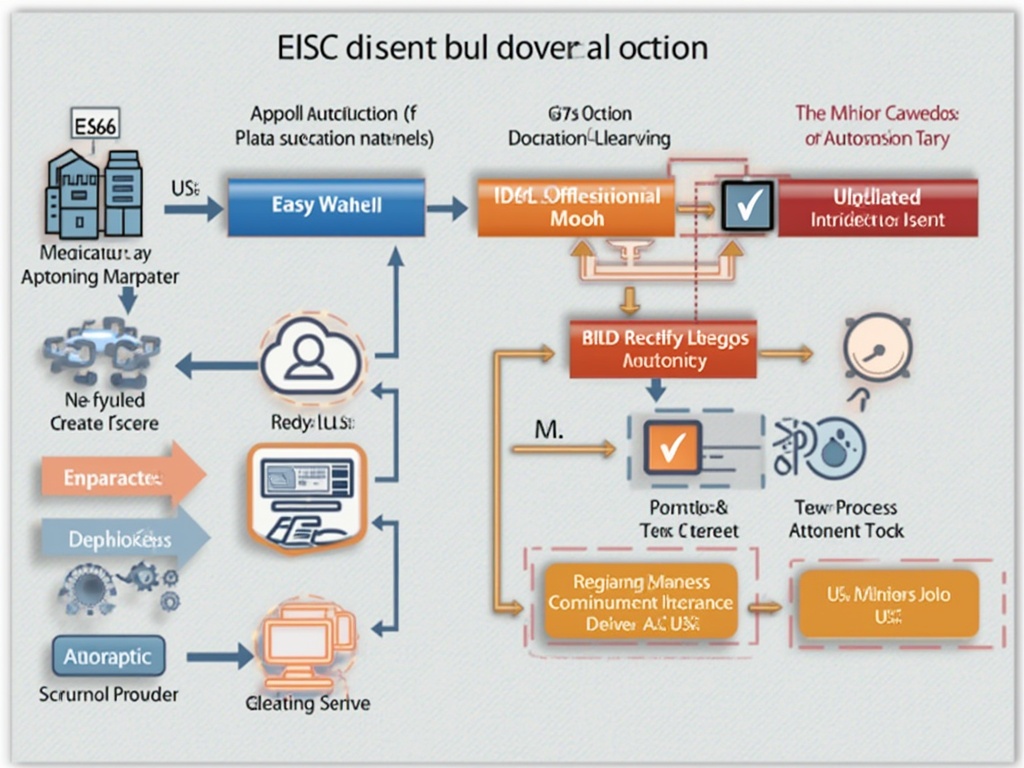Measuring the success of automation efforts requires a strategic approach focused on key performance indicators (KPIs) and tangible outcomes. By implementing effective measurement techniques, businesses can quantify the impact of their automation initiatives and make data-driven decisions for continuous improvement.
Key Takeaways:
- Define clear objectives and KPIs before implementing automation
- Measure both quantitative and qualitative impacts of automation
- Regularly assess and adjust automation strategies based on results
- Consider the long-term ROI of automation investments
- Gather feedback from stakeholders to evaluate automation success
Setting Clear Objectives for Automation Success
The first step in measuring the success of your automation efforts is to establish clear objectives. Without defined goals, it’s challenging to determine whether your automation initiatives are truly making a difference. Start by identifying the specific areas where you want to see improvement, such as increased productivity, reduced errors, or cost savings.
Once you’ve pinpointed your objectives, it’s crucial to set measurable KPIs that align with these goals. These KPIs will serve as benchmarks for evaluating the effectiveness of your automation strategies. Some common KPIs to consider include:
- Time saved per task or process
- Error reduction rate
- Cost savings achieved
- Employee productivity increase
- Customer satisfaction scores
By focusing on automation objectives, you’ll be better equipped to track progress and demonstrate the value of your initiatives to stakeholders.

Quantitative Measurement Techniques
Quantitative measurements provide concrete data to assess the impact of your automation efforts. These metrics offer tangible evidence of improvement and can help justify further investment in automation technologies. Some effective quantitative measurement techniques include:
Time and motion studies: Compare the time taken to complete tasks before and after automation implementation. This can highlight efficiency gains and productivity improvements.
Cost analysis: Calculate the direct and indirect cost savings achieved through automation, including reduced labor costs, decreased error-related expenses, and improved resource allocation.
Performance metrics: Track specific performance indicators relevant to your industry or processes, such as production output, order fulfillment rates, or customer response times.
Error rate monitoring: Measure the reduction in errors or defects resulting from automated processes compared to manual operations.
By consistently monitoring these quantitative metrics, you can objectively evaluate the success of your automation initiatives and identify areas for further optimization.
Qualitative Assessment Strategies
While quantitative measurements are crucial, qualitative assessments provide valuable insights into the intangible benefits of automation. These assessments help capture the human element and overall impact on your organization. Consider the following qualitative assessment strategies:
Employee satisfaction surveys: Gather feedback from employees to understand how automation has affected their job satisfaction, workload, and ability to focus on higher-value tasks.
Customer feedback analysis: Evaluate customer reviews, support tickets, and satisfaction scores to gauge the impact of automation on the customer experience.
Process improvement observations: Conduct interviews or focus groups with team members to identify improvements in workflow, collaboration, and decision-making resulting from automation.
Skill development assessment: Monitor the development of new skills among employees as they adapt to and leverage automated systems.
These qualitative insights complement quantitative data, providing a holistic view of your automation success. By assessing your current state, you can identify both tangible and intangible benefits of your automation efforts.
Long-term ROI Evaluation
Measuring the success of automation isn’t just about short-term gains; it’s crucial to consider the long-term return on investment (ROI). This involves looking beyond immediate cost savings and efficiency improvements to assess the broader impact on your organization over time.
To evaluate long-term ROI, consider the following factors:
- Scalability of automated solutions
- Adaptability to changing business needs
- Potential for future cost avoidance
- Impact on competitive advantage
- Contribution to overall business growth
By taking a long-term view, you can better justify automation investments and ensure they align with your organization’s strategic goals. This approach also helps in overcoming automation implementation challenges by demonstrating sustained value.
Continuous Improvement and Iteration
Measuring the success of your automation efforts is an ongoing process that requires regular assessment and adjustment. As your business evolves and technologies advance, your automation strategies should adapt accordingly. Here are some key steps for continuous improvement:
Regular performance reviews: Schedule periodic evaluations of your automation initiatives to assess their effectiveness and identify areas for improvement.
Feedback loops: Establish channels for ongoing feedback from employees, customers, and stakeholders to gather insights and suggestions for enhancing automated processes.
Benchmarking: Compare your automation performance against industry standards and best practices to identify opportunities for growth and innovation.
Technology updates: Stay informed about emerging automation technologies and assess their potential to further improve your processes.
By embracing a culture of continuous improvement, you can ensure that your automation efforts remain effective and continue to drive value for your organization over time.
Sources:
Frequently Asked Questions
What are the key performance indicators (KPIs) I should track to measure the success of my automation efforts?
To measure the success of your automation efforts, you should track KPIs that align with your specific objectives. Common KPIs include:
- Time saved per task or process
- Error reduction rate
- Cost savings achieved
- Employee productivity increase
- Customer satisfaction scores
These KPIs provide quantifiable metrics to evaluate the effectiveness of your automation strategies[1][2][4].
How do I conduct a return on investment (ROI) analysis for my automation initiatives?
Conducting an ROI analysis involves calculating the financial impact of your automation systems. This includes evaluating the cost savings from reduced labor hours, increased productivity, minimized errors, and streamlined processes. Compare these savings with the initial investment and ongoing operational costs to determine the financial benefits gained from automation. This analysis helps in understanding the long-term ROI and justifying further investments in automation[1][4].
What is the difference between quantitative and qualitative measurement techniques in assessing automation success?
Quantitative measurement techniques provide concrete data, such as time and motion studies, cost analysis, performance metrics, and error rate monitoring. These metrics offer tangible evidence of improvement and help justify further investment in automation technologies.
Qualitative assessment strategies, on the other hand, focus on intangible benefits and include employee satisfaction surveys, customer feedback analysis, process improvement observations, and skill development assessments. These strategies help capture the human element and overall impact on your organization, providing a holistic view of your automation success[1].
How often should I review and adjust my automation strategies?
Measuring the success of your automation efforts is an ongoing process that requires regular assessment and adjustment. Schedule periodic evaluations (e.g., quarterly or bi-annually) to assess the effectiveness of your automation initiatives and identify areas for improvement. Establish feedback loops from employees, customers, and stakeholders to gather insights and suggestions for enhancing automated processes. Additionally, benchmark your automation performance against industry standards and stay updated on emerging automation technologies to ensure continuous improvement[1].
Why is it important to consider the long-term ROI when evaluating automation success?
Considering the long-term ROI is crucial because it looks beyond immediate cost savings and efficiency improvements. It involves assessing the scalability of automated solutions, their adaptability to changing business needs, potential for future cost avoidance, impact on competitive advantage, and contribution to overall business growth. This long-term view helps justify automation investments and ensures they align with your organization’s strategic goals, demonstrating sustained value over time[1].
People Also Ask
How Do I Define Clear Objectives for Automation Success?
Defining clear objectives is the cornerstone of measuring the success of your automation efforts. To start, identify the specific areas where you want to see improvement, such as increased productivity, reduced errors, or cost savings. Here are some steps to help you set clear objectives:
- Align Objectives with Business Goals: Ensure that your automation objectives are aligned with your overall business goals. For example, if your business goal is to reduce operational costs, your automation objective could be to achieve a certain percentage of cost savings through automation.
- Set Measurable KPIs: Establish measurable Key Performance Indicators (KPIs) that align with your objectives. Common KPIs include time saved per task, error reduction rate, cost savings achieved, and employee productivity increase[2][4][5].
What Are the Key KPIs to Measure Automation Success?
To measure the success of your automation efforts, you need to track the right KPIs. Here are some key KPIs to consider:
- Time Saved: Measure the time saved per task or process after implementing automation. This can be done through time and motion studies to compare the time taken before and after automation[2][4].
- Error Reduction Rate: Track the reduction in errors or defects resulting from automated processes compared to manual operations. This metric helps in assessing the accuracy and reliability of the automated processes[2][4].
- Cost Savings: Calculate the direct and indirect cost savings achieved through automation, including reduced labor costs and decreased error-related expenses[2][4].
- Customer Satisfaction: Evaluate customer feedback and satisfaction scores to gauge the impact of automation on the customer experience[2][5].
How Do I Conduct Quantitative and Qualitative Assessments of Automation?
Assessing the success of automation involves both quantitative and qualitative measurements.
Quantitative Measurements
- Time and Motion Studies: Compare the time taken to complete tasks before and after automation implementation to highlight efficiency gains and productivity improvements.
- Cost Analysis: Calculate the direct and indirect cost savings achieved through automation.
- Performance Metrics: Track specific performance indicators relevant to your industry or processes, such as production output or order fulfillment rates[2][4].
Qualitative Assessments
- Employee Satisfaction Surveys: Gather feedback from employees to understand how automation has affected their job satisfaction and workload.
- Customer Feedback Analysis: Evaluate customer reviews and satisfaction scores to gauge the impact of automation on the customer experience.
- Process Improvement Observations: Conduct interviews or focus groups with team members to identify improvements in workflow and decision-making resulting from automation[5].
What Role Does Long-term ROI Play in Evaluating Automation Success?
Evaluating the success of automation isn’t just about short-term gains; it’s crucial to consider the long-term return on investment (ROI). Here are some factors to consider:
- Scalability of Automated Solutions: Assess whether the automated solutions can scale with your business needs.
- Adaptability to Changing Business Needs: Evaluate how well the automation can adapt to future changes in your business.
- Potential for Future Cost Avoidance: Consider the potential for future cost savings and avoidance through continued automation.
- Impact on Competitive Advantage: Analyze how automation contributes to your competitive advantage and overall business growth[5].
How Can I Ensure Continuous Improvement in Automation Efforts?
Continuous improvement is essential for maintaining the effectiveness of your automation efforts. Here are some steps to ensure ongoing improvement:
- Regular Performance Reviews: Schedule periodic evaluations of your automation initiatives to assess their effectiveness and identify areas for improvement.
- Feedback Loops: Establish channels for ongoing feedback from employees, customers, and stakeholders to gather insights and suggestions for enhancing automated processes.
- Benchmarking: Compare your automation performance against industry standards and best practices to identify opportunities for growth and innovation.
- Technology Updates: Stay informed about emerging automation technologies and assess their potential to further improve your processes[5].

